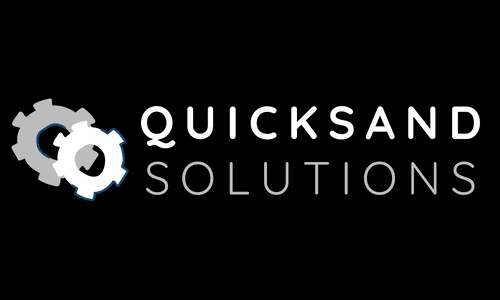As a small business owner, you know how vital it is to connect with customers and grow your brand online. But with the dizzying array of digital marketing options out there, how do you know where to focus?
In this comprehensive guide, we’ll walk through the 10 best digital marketing strategies for small business success and provide actionable tips to boost your web presence, traffic and conversions.
1. Optimize for Organic Search with SEO
Ranking higher in organic search results is critical for driving relevant traffic to your website. As Moz’s Beginner’s Guide to SEO says, “SEO is the process of improving your site to increase its visibility when people search for products or services related to your business.”
The key is targeting high-value keywords that prospects search for and creating content that answers their questions. Optimize pages and posts for those terms using on-page elements like meta descriptions. Build authority by earning backlinks and reviews. Google rewards websites that publish original, useful content, so focus on quality over quantity.
2. Content Marketing to Attract Your Audience
According to HubSpot, “Content marketing is a strategic marketing approach focused on creating and distributing valuable, relevant, and consistent content to attract and retain a clearly defined audience.”
Consistently publish blog posts, videos, infographics, and other media that provides value for your customers. Content that educates, entertains, solves problems, or informs a specific audience performs best. Promote your content across social media, email, and paid channels. The more relevant content you create, the more you’ll engage your ideal buyers.
3. Email Marketing and Lead Generation
Email marketing remains an extremely effective way to reach prospects directly. As Emfluence notes, “When you dig deep into your email marketing analytics and understand what all the data means, you can start actively planning and optimizing your route toward a better Return on Investment (ROI). And in business, nothing feels better than making more money.”
Offer subscribers an incentive like a discount, free consultation, or gated content in exchange for their email. Send a regular, valuable newsletter to build relationships and promote products. Use email automation to send drip campaigns guiding subscribers down the conversion path.
4. Harness the Power of Social Media
Social platforms like Facebook, Instagram, Twitter, LinkedIn and Pinterest allow you to connect directly with current and potential customers. Sprout Social recommends, “maintaining and growing your social media presence helps build brand awareness and loyalty.”
Post updates, engaging content, and promotions regularly. Use hashtags and tagging to increase discoverability. Run paid social ads to expand reach. Add links to your website and calls-to-action to drive traffic. Provide great customer service by responding to comments and questions.
5. PPC Advertising Drives New Visitors
As WordStream explains, “Pay-per-click (PPC) is an internet advertising model used to drive traffic to websites, in which an advertiser pays a publisher when the ad is clicked.”
Tools like Google Ads make it easy to set up and optimize targeted campaigns. You can display PPC ads on SERPs, social media sites, and the Google Display Network. The benefit of PPC is that you can get your ads in front of motivated people as they search for your products and services.
6. Nurture Leads with Marketing Automation
According to HubSpot, marketing automation refers to “software platforms and technologies designed for marketing departments and organizations to more effectively market on multiple channels.”
Automating workflows with a tool like Mailchimp or Hubspot allows you to deliver personalized messaging at scale. Set up welcome and onboarding email sequences when users join your list. Track their behaviors to trigger follow-ups and offers. Automation nurtures leads down the funnel.
7. Optimize Conversions with Testing
As OptinMonster suggests, “Conversion rate optimization (CRO) is the methodical process of optimizing your online marketing assets for maximum conversion performance.”
Using A/B testing and analytics, identify high-traffic landing pages and run controlled experiments to improve conversions. Test elements like headlines, call-to-action copy, layouts, images, and forms to see which versions perform best. Optimization is about continual improvement.
8. Retarget Site Visitors through Remarketing
Retargeting or remarketing involves serving targeted ads to past visitors as they browse other sites across the web. As WordStream notes, “The goal of retargeting is to remind users about your brand after they’ve left your website in order to continue nurturing them into leads.”
Use tracking pixels to create custom audiences who have visited key pages. Then display relevant ads to them on platforms like Google and Facebook. This keeps your brand visible and brings audiences back into the conversion funnel.
9. Expand Your Reach with Strategic Partnerships
As Single Grain explains, “Guest posting is the practice of writing and publishing content on a site that isn’t your own. It allows you to tap into a whole new audience by getting featured on authoritative sites related to your niche.”
Identify reputable industry websites or complementing brands and pitch guest posting collaborations. Contributing unique content raises your authority and earns valuable backlinks. You can also pursue co-marketing partnerships, local cross-promotions, affiliate programs, and more to grow your audience.
10. Track Performance with Analytics
As HubSpot notes, “Marketing analytics refers to measuring, managing and analyzing marketing performance to maximize its effectiveness and optimize return on investment (ROI).”
Tools like Google Analytics provide data on your website visitors, engagements, conversions and more. Collect and analyze metrics on your campaigns to identify successes and areas for improvement. Continual optimization and A/B testing allows you to refine strategies.
Now You’re Ready for Digital Marketing Success!
Which strategies resonated most? Pick 2-3 to focus on and commit to consistent implementation. With smart digital marketing, any small business can increase brand awareness, nurture leads and drive conversions over time.
